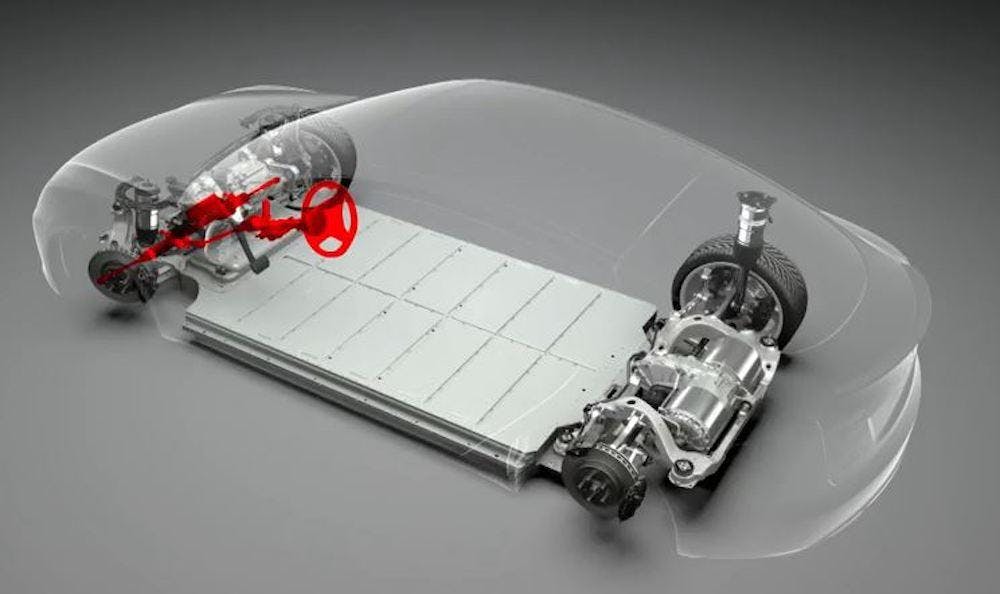Media | Articles
“Million-mile” battery nears production, according to Tesla supplier CATL
Tesla’s future battery supplier, Contemporary Amperex Technology Co., Limited (CATL), has announced in an interview with Bloomberg that it is “ready to produce” a battery certified for 1.24 million miles and 16 years of service in an electric vehicle. If this million-mile battery enters production, it represents a huge step forward both for the EV industry and for the scientific community.
The uncomfortable truth about modern EVs is that they carry bricks of potentially dangerous, difficult-to-recycle chemicals in their bellies. Current battery packs are notorious for living shorter lives than the vehicles they power, requiring expensive replacements around a vehicle’s mid-life (roughly, beyond 100,000 miles). By offering warranties that cover a battery far beyond the rest of the vehicle, manufacturers have been footing the bill for this technological shortcoming, but an extended battery warranty is merely a temporary fix. With the million-mile battery on the horizon, EVs could take a substantial leap forward in value, sustainability, and overall performance.
What makes CATL’s batteries so special—and so capable? Here’s a quick rundown.
A battery is made up of several parts that, when combined in a tight space, produce an electric current via a chemical reaction. Whether the battery in question powers a pacemaker or a hypercar, it operates on the same basic principle. The two terminals on a battery are the cathode (positive) and anode (negative), which interlock inside the battery and are suspended in an electrolyte solution, which drives the movement of electrons stored in the battery. By tweaking the chemistry of these three components, or changing their composition or packaging, you can adjust the capacity, voltage, and discharge rates. The problem is that, as batteries degrade due to age and cycle count, they break down internally until the chemical reaction stops altogether and the cell dies.
One of the most common failures is the breakdown of the cathode’s crystal structure on the inside of the battery. Think of common polycrystalline cathodes as composed of individual crystals like castles made of sand. This structure is strong at first, but eventually, it weakens. This decomposition results in the fading performance of current lithium batteries. CATL’s innovation, which brings such monumental improvements to battery lifespan, is the use of monocrystalline cathodes, which are made up of a single crystal, like a fort carved from a single block of granite.
Marketplace
Buy and sell classics with confidence

Additionally, Tesla recently filed a patent for electrolytic additives which allow lithium-ion cells to operate at higher temperatures and voltages. The genius of this improvement is its promise to increase performance with virtually no weight penalty. The electrolyte solution in a battery ultimately allows the movement of electrons between the anode and cathode, and the ability to further modify its chemistry for automotive use is vital. Currently, most EV battery cells are very similar to those in your laptop, but EV batteries have a very different demands. The automotive industry thus represents a unique set of challenges, and its chase for the million-mile battery has put great pressure on popular battery tech.
A million-mile battery isn’t simply a boon to marketing; it’s a genuine necessity for EVs. EVs may be remarkably earth-friendly to operate, but they’re less so to produce and to recycle. The production of EV batteries requires scraping the scalp of the earth for lithium and cobalt, and if these finite resources enjoy only a brief shelf life in a battery pack, their expense partially defeats EVs ecologically-conscious mission. Recycling these battery packs, especially at the scale and volume demanded by the automotive industry, also creates a nasty challenge—one that the million-mile battery could alleviate by reducing battery degradation over time, thus requiring fewer (if any) battery replacements to be built over the vehicle’s lifetime.
It’s already a safe bet that electric drivelines—the motors and gearboxes themselves—will outlast their internal-combustion brethren, but extending the lives of the battery packs has been a monumental struggle for the mass adoption of EVs. Should the million-mile battery reach production, EVs will have cleared a significant hurdle in their quest to become the standard powertrain for future automobiles.











